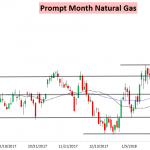Recycling is one of those warm and fuzzy, yet incredibly mushy, terms that people just love to abuse. The goal of all recycling is to recover valuable materials so they can be reused to make new products. Anything less is simply safe disposal that wastes valuable materials by removing them from the supply chain.
To recycle lead-acid batteries, for example, you shred them and dump everything into a water bath where the plastic floats and the metal sinks. Then you skim the plastic off the top, smelt the metal layer to remove impurities and process the bath water to reclaim the sulfuric acid. The recovered lead, plastics and acid are all suitable for reuse in battery manufacturing. The process is simple, clean and profitable because a tonne of batteries contains roughly 700 kg of lead with a market value of roughly $1,400. In the US, lead-acid batteries have a near perfect 99.3% recycling record and recycled lead satisfies over 80% of annual demand. It’s an almost perfect closed loop system where substantially all of the materials used to make lead-acid batteries are recycled and reused over and over again.
Lithium-ion batteries, in contrast, are complex devices with important concentrations of several valuable materials. The schematic on the left shows the basic construction of a lithium-ion cell and the table on the right summarizes typical mass percentages for various cell components.

From a recycling perspective, the most valuable metals are lithium, cobalt, nickel and copper. While aluminum, steel and carbon anode materials have modest values, those values pale in comparison to the technology metal values. The following table summarizes the spot market values of the technology metals embodied in a tonne of high energy lithium-ion cells.

Compared to lead-acid batteries that contain about $1,400 worth of valuable metals per tonne, end-of-life lithium-ion batteries are a potential bonanza.












Leave A Comment